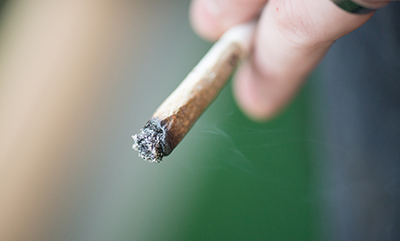Association Found Between Marijuana Use and Adolescent Dating Violence.
 Marijuana use is associated with an increased likelihood of physical dating violence among adolescents, although the reasons why remain unclear, and there is no indication that marijuana “causes” violence, says a study co-authored by School of Public Health researchers.
Marijuana use is associated with an increased likelihood of physical dating violence among adolescents, although the reasons why remain unclear, and there is no indication that marijuana “causes” violence, says a study co-authored by School of Public Health researchers.
Noting that a number of states have loosened restrictions on marijuana, researchers from SPH and the Johns Hopkins Bloomberg School of Public Health conducted a review and meta-analysis of studies on marijuana use and physical dating violence (PDV), to gauge whether adolescent users were more likely than non-users to be perpetrators or victims of PDV. They found that marijuana use was associated with a 54 percent increase in the odds of PDV victimization and a less significant increase in the odds of perpetration. The association was stronger for girls than for boys.
“Given the current state of the literature, it is difficult to estimate how changes in marijuana use (subject to policy change) would impact the prevalence of dating violence,” says the study, published online by the journal Drug and Alcohol Dependence.
“If marijuana increases the likelihood of specific incidents of dating violence, increases in use would likely result in increases in violence. However, if marijuana co-occurs, but does not lead to violence, an increase in marijuana use would result in only minimal changes in dating violence.”
The authors said additional research was needed to examine the mechanisms underlying the association. But they recommended that dating violence be “routinely included as a core data item” in marijuana surveillance systems.
“This work provides strong evidence that marijuana use is (at least) a correlate of PDV among young people, signaling that we should expand public health efforts to monitor and address both behaviors in combination, as well as independently,” they said.
The study defined PDV as non-sexual aggressive behavior among current or former romantic, intimate, or dating partners. The authors noted past study findings that marijuana alters users’ physiological and psychological states, creating “perception distortions” and potentially impairing the ability to squelch aggressive impulses. The drug also is known to make users feel paranoid or anxious, which could “elevate risk for conflict,” they said.
They cited prior research indicating that marijuana use may contribute to impaired relationship decision-making, which could increase susceptibility to entering into unhealthy or violent dating relationships.
The researchers said more study is needed to understand whether marijuana use is a predictor of future physical dating violence—and if so, what the timing of initiating use is, in relation to PDV.
SPH co-authors include: Emily Rothman, associate professor of community health sciences; Michael LaValley, professor of biostatistics; and Kayley Pettoruto, an SPH alumna. The study was led by Renee Johnson, an associate professor in Bloomberg’s Department of Mental Health.
The study was funded by grants from the National Institutes of Health.